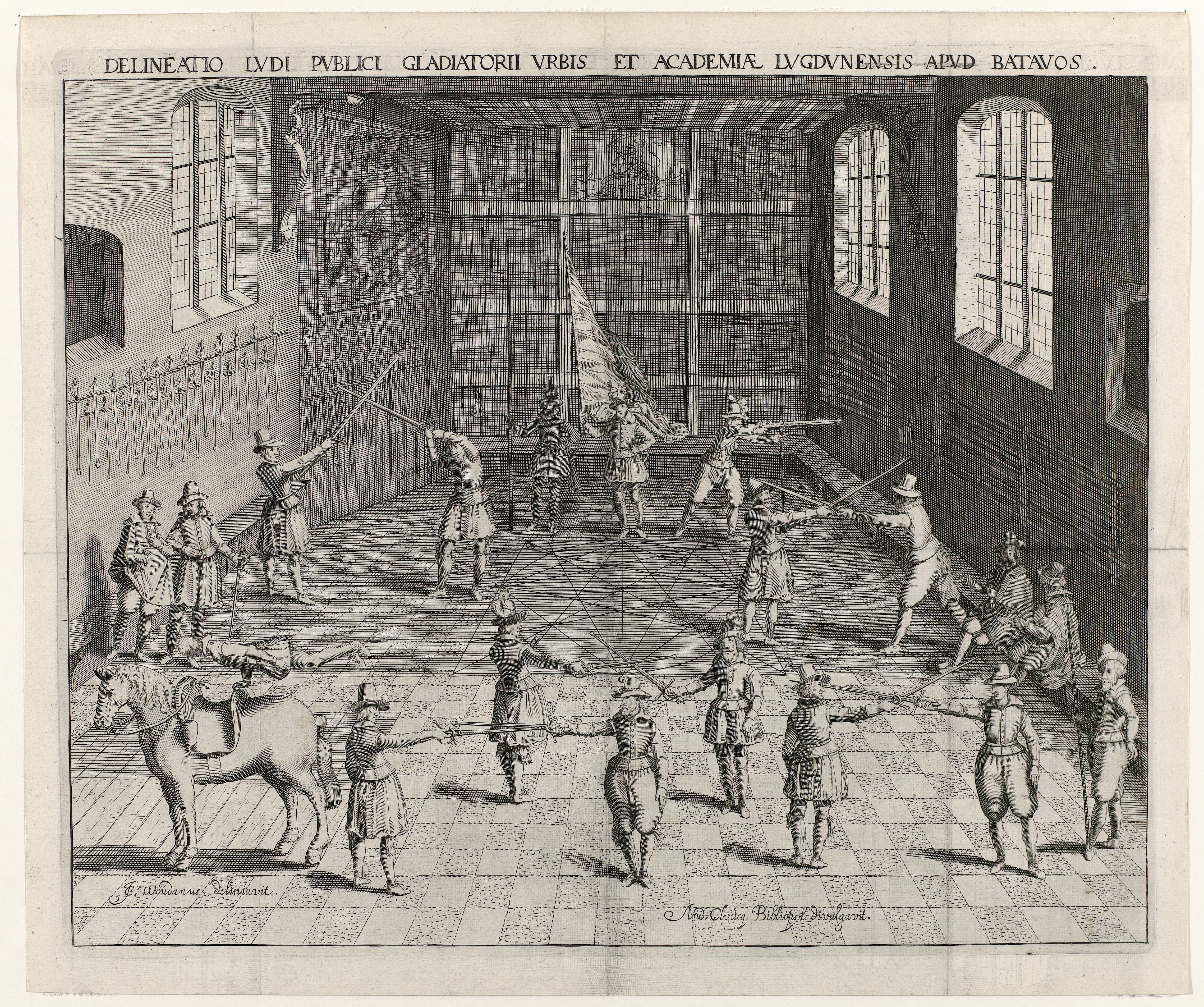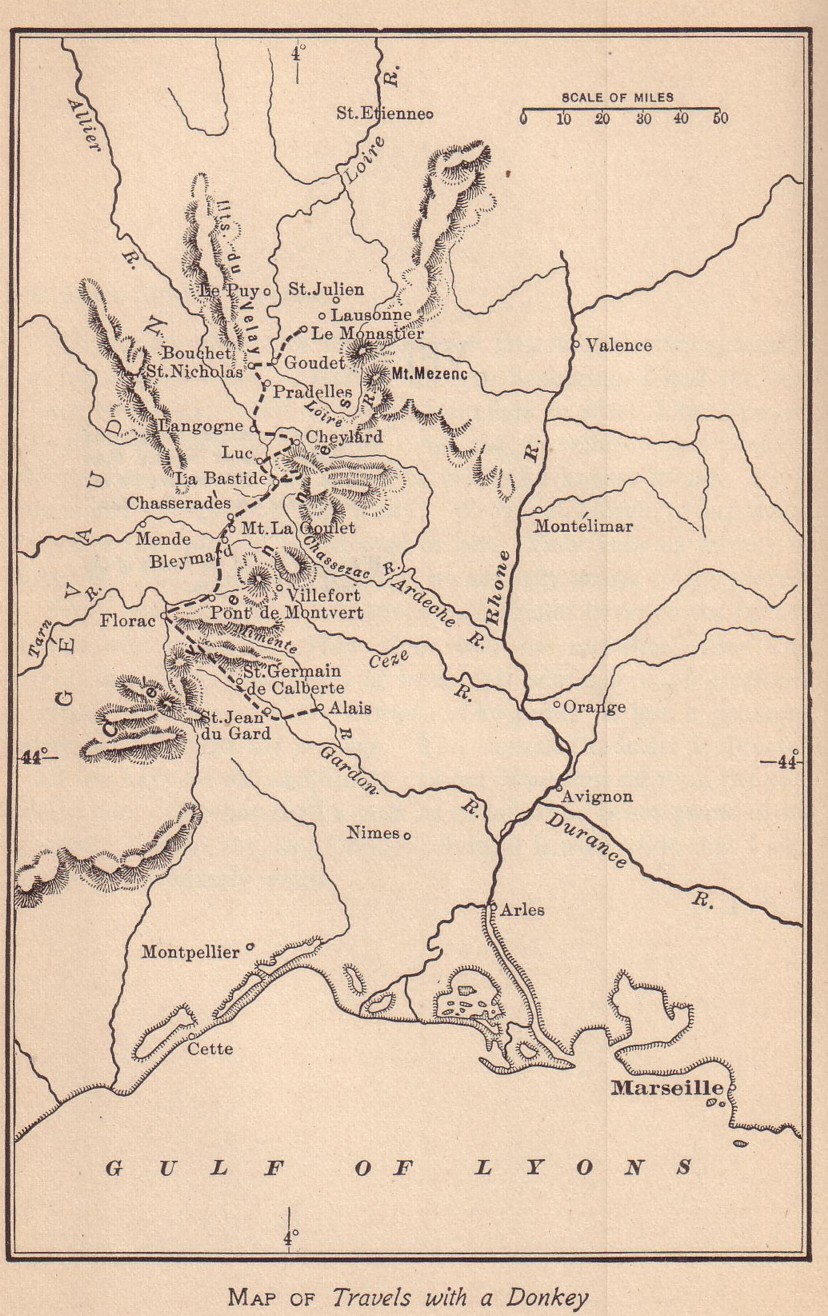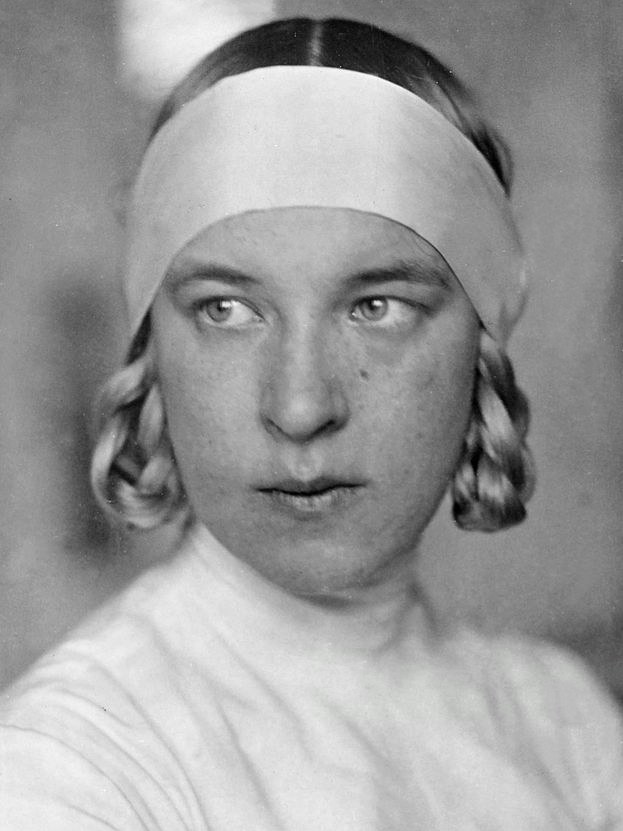|
Régis Sénac
Régis Sénac, famous French fencer and instructor, was the father of Louis Senac. Sénac was an instructor of fencing for many years in the French army (Maître d'Armes in the Grande Impériale of France) before emigrating to the United States in 1872. He established a fencing school in 1874 in Broadway near Forty-third St., the "Salle d'Armes", in which his son Louis later succeeded him as director. On April 10, 1876 he won the fencing championship of America in a contest held at Tammany Hall, New York, along with 500 dollars. In addition to his wide experience as an instructor, in France he participated in three duels and in each encounter was victorious, escaping without a single scratch, while each of his opponents was seriously disabled. In his 1879 travel journal, Travels with a Donkey in the Cevennes, Robert Louis Stevenson mentions eating at an inn in Goudet, France where there is a portrait of Sénac, the host's nephew, billed as “Professor of Fencing and Champion ... [...More Info...] [...Related Items...] OR: [Wikipedia] [Google] [Baidu] |
Fencing
Fencing is a combat sport that features sword fighting. It consists of three primary disciplines: Foil (fencing), foil, épée, and Sabre (fencing), sabre (also spelled ''saber''), each with its own blade and set of rules. Most competitive fencers specialise in one of these disciplines. The modern sport gained prominence near the end of the 19th century, evolving from historical European swordsmanship. The Italian school of swordsmanship, Italian school altered the Historical European martial arts, historical European martial art of classical fencing, and the French school of fencing, French school later refined that system. Scoring points in a fencing competition is done by making contact with the opponent with one's sword. The 1904 Olympic Games featured a fourth discipline of fencing known as singlestick, but it was dropped after that year and is not a part of modern fencing. Competitive fencing was one of the first sports to be featured in the Olympics and, along with Athl ... [...More Info...] [...Related Items...] OR: [Wikipedia] [Google] [Baidu] |
Louis Senac
Louis may refer to: People * Louis (given name), origin and several individuals with this name * Louis (surname) * Louis (singer), Serbian singer Other uses * Louis (coin), a French coin * HMS ''Louis'', two ships of the Royal Navy See also * Derived terms * King Louis (other) * Saint Louis (other) * Louis Cruise Lines * Louis dressing, for salad * Louis Quinze, design style Associated terms * Lewis (other) * Louie (other) * Luis (other) * Louise (other) * Louisville (other) Associated names * * Chlodwig, the origin of the name Ludwig, which is translated to English as "Louis" * Ladislav and László - names sometimes erroneously associated with "Louis" * Ludovic, Ludwig, Ludwick, Ludwik Ludwik () is a Polish given name. Notable people with the name include: * Ludwik Czyżewski, Polish WWII general * Ludwik Fleck (1896–1961), Polish medical doctor and biologist * Ludwik Gintel (1899–1973), Polish-Israeli ... [...More Info...] [...Related Items...] OR: [Wikipedia] [Google] [Baidu] |
Tammany Hall
Tammany Hall, also known as the Society of St. Tammany, the Sons of St. Tammany, or the Columbian Order, was an American political organization founded in 1786 and incorporated on May 12, 1789, as the Tammany Society. It became the main local political machine of the History of the United States Democratic Party, Democratic Party and played a major role in controlling History of New York City, New York City and New York (state), New York state politics. It helped immigrants, most notably Irish Americans in New York City, the Irish, rise in American politics from the 1850s into the 1960s. Tammany usually controlled Democratic nominations and political patronage in Manhattan for over 100 years following the mayoral victory of Fernando Wood in 1854, and used its patronage resources to build a loyal, well-rewarded core of district and precinct leaders; after 1850, the vast majority were Irish Catholics due to mass immigration from Ireland during and after the Great Famine (Ireland), ... [...More Info...] [...Related Items...] OR: [Wikipedia] [Google] [Baidu] |
Travels With A Donkey In The Cévennes
''Travels with a Donkey in the Cévennes'' (1879) is one of Robert Louis Stevenson's earliest published works and is considered a pioneering classic of outdoor literature. Background Stevenson was in his late 20s and still dependent on his parents for support. His journey was designed to provide material for publication while allowing him to distance himself from a love affair with an American woman of which his friends and family did not approve and who had returned to her husband in California. ''Travels'' recounts Stevenson's 12-day, solo hiking journey through the sparsely populated and impoverished areas of the Cévennes mountains in south-central France in 1878. The terrain, with its barren rocky heather-filled hillsides, he often compared to parts of Scotland. The other principal character is Modestine, a stubborn, manipulative donkey he could never quite master. It is one of the earliest accounts to present hiking and camping outdoors as a recreational activity. It al ... [...More Info...] [...Related Items...] OR: [Wikipedia] [Google] [Baidu] |
List Of USFA Hall Of Fame Members
This is a list of the members of the United States Fencing Hall of Fame. The Hall of Fame itself is on display at the Museum of American Fencing, in Shreveport, Louisiana. 1963–1978 ''Note:'' The USFA Hall of Fame Committee was disbanded in 1978. Individuals who are indicated as entered into the Hall of Fame before 1978 may have been entered in years other than those listed. The USFA Hall of Fame Committee was reinstated in 1996. ;1963 *Norman Armitage *George Calnan *Julio Castello *Clovis Deladrier *Robert Grasson *Sherman Hall *Graeme Hammond *John Huffman *Joseph Levis *Helene Mayer *James Murray *Leo Nunes *William Scott O’Connor *Joseph Brooks Bloodgood Parker *John Sanford Saltus *Giorgio Santelli *Maria Cerra ;1967 *Hugo Castello *Lajos Csiszar *Miguel de Capriles *Irving DeKoff *Andre Deladrier *Maxwell Garret *James Montague *Stanley Sieja ;Prior to 1974 *Dean Cetrulo *José de Capriles *Michael DeCicco *Ralph Faulkner *Ralph Goldstein *Alvar Hermans ... [...More Info...] [...Related Items...] OR: [Wikipedia] [Google] [Baidu] |
French Male Fencers
French may refer to: * Something of, from, or related to France ** French language, which originated in France ** French people, a nation and ethnic group ** French cuisine, cooking traditions and practices Arts and media * The French (band), a British rock band * "French" (episode), a live-action episode of ''The Super Mario Bros. Super Show!'' * ''Française'' (film), a 2008 film * French Stewart (born 1964), American actor Other uses * French (surname), a surname (including a list of people with the name) * French (tunic), a type of military jacket or tunic * French's, an American brand of mustard condiment * French (catheter scale), a unit of measurement * French Defence, a chess opening * French kiss, a type of kiss See also * France (other) * Franch, a surname * French Revolution (other) * French River (other), several rivers and other places * Frenching (other) * Justice French (other) Justice French may refer to: * C. G. ... [...More Info...] [...Related Items...] OR: [Wikipedia] [Google] [Baidu] |
Year Of Birth Missing
A year is a unit of time based on how long it takes the Earth to orbit the Sun. In scientific use, the tropical year (approximately 365 solar days, 5 hours, 48 minutes, 45 seconds) and the sidereal year (about 20 minutes longer) are more exact. The modern calendar year, as reckoned according to the Gregorian calendar, approximates the tropical year by using a system of leap years. The term 'year' is also used to indicate other periods of roughly similar duration, such as the lunar year (a roughly 354-day cycle of twelve of the Moon's phasessee lunar calendar), as well as periods loosely associated with the calendar or astronomical year, such as the seasonal year, the fiscal year, the academic year, etc. Due to the Earth's axial tilt, the course of a year sees the passing of the seasons, marked by changes in weather, the hours of daylight, and, consequently, vegetation and soil fertility. In temperate and subpolar regions around the planet, four seasons are ... [...More Info...] [...Related Items...] OR: [Wikipedia] [Google] [Baidu] |




